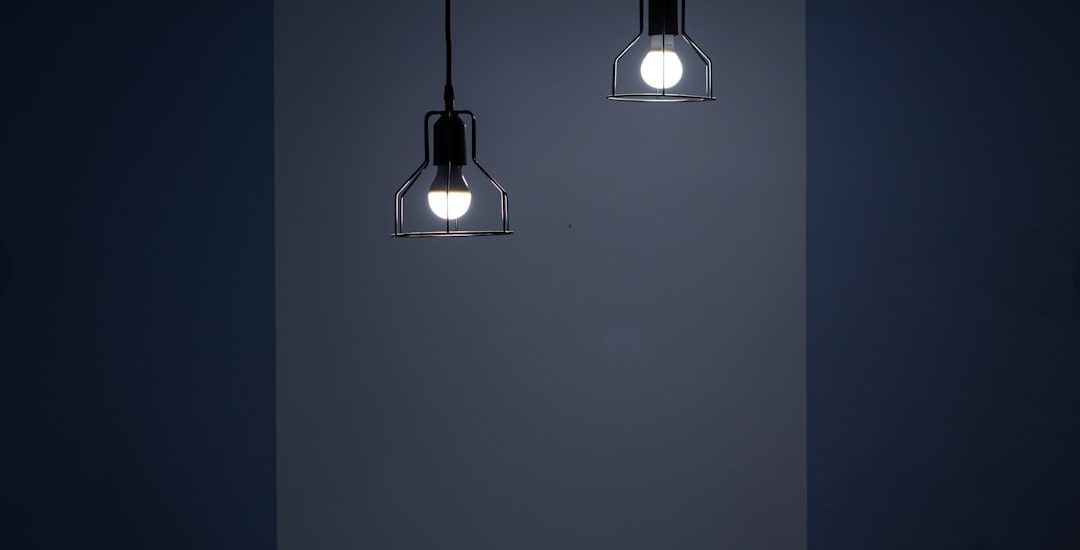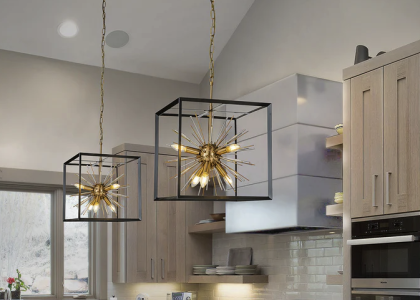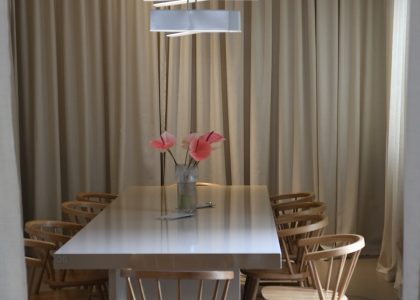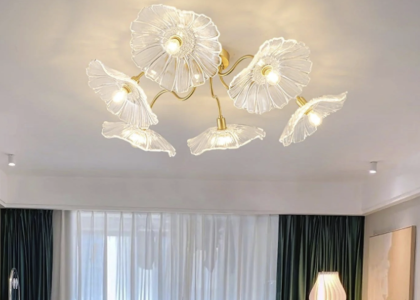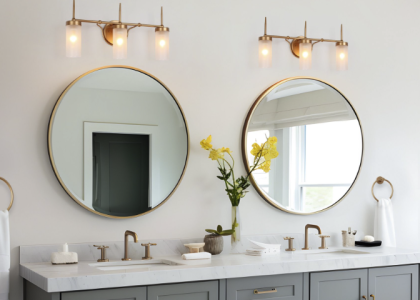Pendant lighting Otaura is a type of lighting fixture that hangs from the ceiling by a cord, chain, or rod. It is often used to provide focused lighting in specific areas of a room, such as over a kitchen island or dining table. Pendant lighting has been around for centuries and has evolved over time to become a popular choice for both residential and commercial spaces.
The history of pendant lighting can be traced back to ancient civilizations, where they were primarily used for practical purposes such as illuminating workspaces. In the Middle Ages, pendant lights were often made of metal and adorned with intricate designs. During the Renaissance period, pendant lights became more ornate and were considered a symbol of wealth and status.
Today, pendant lighting is popular for several reasons. Firstly, it provides focused lighting, making it ideal for task lighting in areas where concentrated light is needed. Secondly, pendant lights come in a wide variety of styles and designs, allowing homeowners to add style and character to their space. Lastly, pendant lighting is space-saving, as it hangs from the ceiling and does not take up valuable floor or table space.
The Benefits of Pendant Lighting
One of the main benefits of pendant lighting is its ability to provide focused lighting. Unlike other types of lighting fixtures that illuminate an entire room, pendant lights can be positioned to direct light exactly where it is needed. This makes them ideal for task lighting in areas such as kitchen islands, where concentrated light is required for food preparation or cooking.
In addition to providing focused lighting, pendant lighting also adds style and character to a space. With a wide variety of styles and designs available, homeowners can choose pendant lights that complement their existing decor or make a statement on their own. Whether you prefer a modern and sleek look or a more rustic and vintage feel, there is a pendant light out there to suit your taste.
Another advantage of pendant lighting is its space-saving design. Unlike floor or table lamps, pendant lights hang from the ceiling, freeing up valuable floor and table space. This is especially beneficial in smaller rooms or areas where space is limited. Pendant lights can also be used to create a sense of height and openness in a room, making it feel larger and more spacious.
Lastly, pendant lighting is energy-efficient. With the increasing focus on sustainability and energy conservation, many homeowners are opting for energy-efficient lighting options. Pendant lights are available with LED bulbs, which consume less energy and have a longer lifespan compared to traditional incandescent bulbs. This not only helps to reduce energy consumption but also saves money on electricity bills in the long run.
Choosing the Right Pendant Lighting for Your Space
When choosing pendant lighting for your space, there are several factors to consider to ensure you make the right choice.
Firstly, consider the purpose of the space where the pendant lighting will be installed. Is it a kitchen island where you need focused task lighting? Or is it a dining room where you want to create a warm and inviting ambiance? The purpose of the space will help determine the type of pendant lighting that is most suitable.
Next, determine the size of the pendant. The size of the pendant should be proportionate to the size of the space. A small pendant may get lost in a large room, while a large pendant may overwhelm a small space. Consider the height and width of the pendant to ensure it fits well within the room.
Decide on the number of pendants you need. In some cases, a single pendant may be sufficient to provide adequate lighting. However, in larger spaces or areas where more focused lighting is required, multiple pendants may be necessary. Consider the layout and size of the space when deciding on the number of pendants.
Lastly, choose the right height for the pendant. The height at which you hang your pendant will depend on several factors, including the height of the ceiling and the purpose of the pendant. In general, pendant lights should be hung at a height that allows for comfortable viewing and does not obstruct the line of sight.
Popular Pendant Lighting Styles
Pendant lighting comes in a wide variety of styles, allowing homeowners to choose a style that suits their personal taste and complements their existing decor. Here are some popular pendant lighting styles:
1. Modern/Contemporary: Modern or contemporary pendant lights feature sleek and clean lines, often with minimalist designs. They are characterized by their simplicity and understated elegance, making them a popular choice for modern and minimalist interiors.
2. Industrial: Industrial pendant lights are inspired by the industrial revolution and feature raw and rugged designs. They often incorporate materials such as metal, exposed bulbs, and wire cages, giving them a vintage and industrial look.
3. Rustic: Rustic pendant lights are perfect for creating a cozy and warm ambiance. They often feature natural materials such as wood or wrought iron and may have a distressed or weathered finish.
4. Traditional: Traditional pendant lights are characterized by their ornate designs and intricate details. They often feature materials such as brass or crystal and are perfect for adding a touch of elegance to any space.
5. Mid-century modern: Mid-century modern pendant lights are inspired by the design trends of the mid-20th century. They often feature organic shapes, bold colors, and unique materials such as fiberglass or acrylic.
Materials and Finishes for Pendant Lighting
Pendant lighting is available in a wide range of materials and finishes, each offering its own unique look and feel. Here are some common materials and finishes used in pendant lighting:
1. Glass: Glass is a popular material for pendant lighting as it allows for the diffusion of light while adding a touch of elegance to any space. Clear glass pendants provide a sleek and modern look, while frosted or colored glass pendants create a softer and more diffused light.
2. Metal: Metal is a versatile material that can be used to create a wide variety of pendant lighting styles. From sleek and modern stainless steel to vintage and industrial wrought iron, metal pendants offer durability and a timeless appeal.
3. Wood: Wood pendant lights add warmth and natural beauty to any space. They are often used in rustic or farmhouse-style interiors but can also be incorporated into modern or contemporary designs for a touch of warmth and texture.
4. Fabric: Fabric pendant lights are a popular choice for adding softness and texture to a space. They often feature shades made from materials such as linen or cotton and can be customized with different patterns or colors to suit your decor.
5. Plastic: Plastic pendant lights are a more affordable option and are often used in spaces where durability is a concern, such as outdoor areas or children’s rooms. They come in a variety of colors and styles, making them a versatile choice for any space.
How to Install Pendant Lighting

Installing pendant lighting may seem like a daunting task, but with the right tools and instructions, it can be done easily and safely. Here is a step-by-step guide on how to install pendant lighting:
1. Turn off the power: Before starting any electrical work, make sure to turn off the power to the area where you will be installing the pendant lighting. This can be done by switching off the circuit breaker or removing the fuse that controls the power to that area.
2. Assemble the pendant: If your pendant light comes unassembled, follow the manufacturer’s instructions to assemble it before installation. This may involve attaching the shade or glass globe to the fixture, connecting wires, or installing any additional components.
3. Install the mounting bracket: Locate the electrical box in the ceiling where you will be installing the pendant light. Attach the mounting bracket provided with your pendant light to the electrical box using the screws provided. Make sure the bracket is securely fastened to the ceiling.
4. Connect the wires: Carefully thread the wires from the pendant light through the mounting bracket. Match the wires from the pendant light to the corresponding wires in the electrical box (usually black to black, white to white, and green or copper to ground). Twist the wires together and secure them with wire nuts.
5. Attach the pendant to the mounting bracket: Once the wires are connected, carefully lift the pendant light and align it with the mounting bracket. Secure the pendant light to the mounting bracket using the screws provided. Make sure it is securely fastened and level.
Tips for Layering Pendant Lighting
Layering pendant lighting can create a visually interesting and dynamic look in any space. Here are some tips for layering pendant lighting:
1. Use different sizes and shapes of pendants: Mixing and matching different sizes and shapes of pendants can create a visually appealing look. For example, you can hang a large, statement pendant over a dining table and complement it with smaller, more subtle pendants in other areas of the room.
2. Vary the height of the pendants: Hanging pendants at different heights adds depth and dimension to a space. This can be achieved by using adjustable cords or chains to hang the pendants at varying lengths.
3. Mix and match styles and finishes: Don’t be afraid to mix and match different styles and finishes of pendant lighting. Combining modern and industrial styles or mixing metal and glass finishes can create a unique and eclectic look.
Pendant Lighting for Different Rooms in Your Home
Pendant lighting can be used in various rooms throughout your home to enhance both functionality and aesthetics. Here are some ideas for using pendant lighting in different rooms:
1. Kitchen: Pendant lighting is commonly used in kitchens, particularly over kitchen islands or breakfast bars. Hanging pendant lights over these areas provides focused task lighting for food preparation or dining. Choose pendants that complement your kitchen decor and provide adequate lighting for the space.
2. Dining room: Pendant lighting is a popular choice for dining rooms as it can create a warm and inviting ambiance. Hang a statement pendant light over the dining table to serve as a focal point and complement it with smaller pendants or wall sconces to provide additional lighting.
3. Living room: Pendant lighting can be used in living rooms to add style and character to the space. Hang a large, statement pendant light in the center of the room to create a focal point, or use smaller pendants to highlight specific areas such as a reading nook or seating area.
4. Bedroom: Pendant lighting can be used in bedrooms as an alternative to traditional bedside table lamps. Hang pendant lights on either side of the bed to provide focused task lighting for reading or use a single pendant light in the center of the room to create a soft and romantic ambiance.
5. Bathroom: Pendant lighting can be used in bathrooms to add style and functionality. Hang pendant lights on either side of the vanity mirror to provide even and flattering lighting for grooming tasks. Choose pendants that are suitable for damp environments and have appropriate IP ratings.
Maintenance and Cleaning of Pendant Lighting
To keep your pendant lighting looking its best, regular maintenance and cleaning are necessary. Here are some tips for maintaining and cleaning your pendant lighting:
1. Dust regularly: Dust your pendant lights regularly using a soft cloth or duster. This will help prevent dust buildup and keep your lights looking clean and bright.
2. Clean with a soft cloth and mild soap: If your pendant lights become dirty or stained, clean them with a soft cloth dampened with mild soap and water. Gently wipe the surface of the pendant, taking care not to scrub too hard or use abrasive cleaners that could damage the finish.
3. Avoid using abrasive cleaners: Avoid using abrasive cleaners or harsh chemicals on your pendant lights, as they can damage the finish or the materials. Stick to mild soap and water or specialized cleaning products designed for pendant lighting.
Enhancing Your Space with Pendant Lighting
In conclusion, pendant lighting is a versatile and stylish lighting option that can enhance any space. Whether you’re looking to add focused task lighting in your kitchen, create a warm and inviting ambiance in your dining room, or add style and character to your living room, pendant lighting offers a wide range of options to suit your needs.
By considering the purpose of the space, choosing the right size and style of pendant lighting, and following proper installation and maintenance procedures, you can enjoy the benefits of pendant lighting in your own home. So why not give pendant lighting a try and see how it can transform your space?

